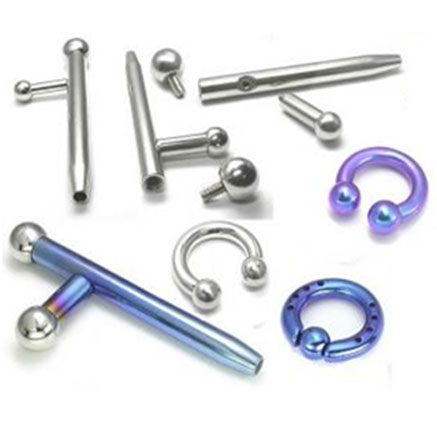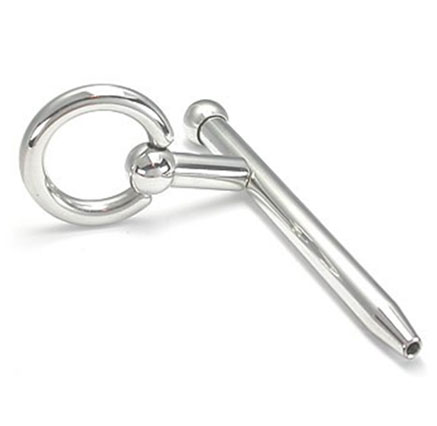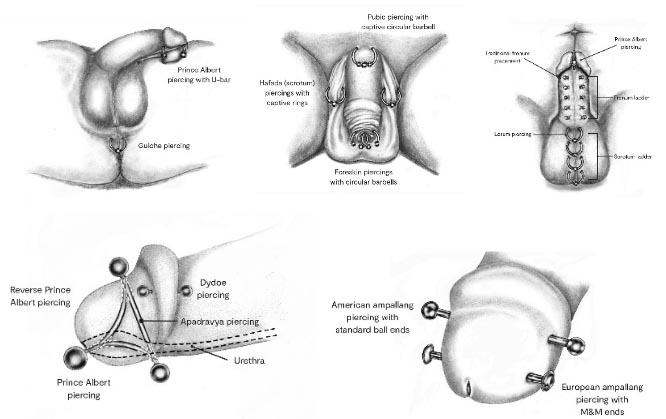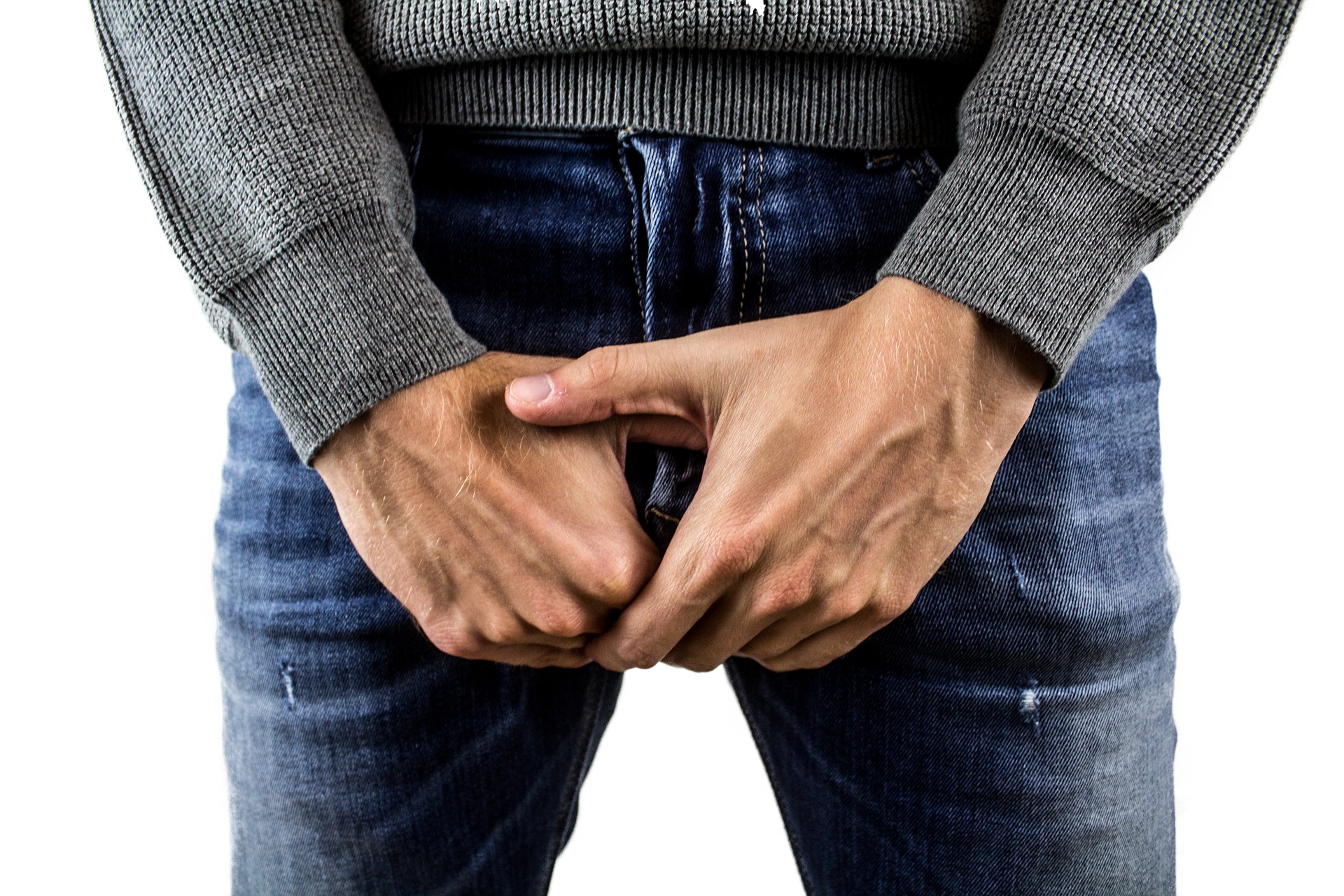Prince Albert Piercings
Body Modifications for Prince Albert Piercings
Genital piercings have become increasingly popular with both men and women and are in the class of body modifications including the Prince Albert Piercings. Viewed as a form of individuality, and a secret in the sense that only people one is intimate with would know about them, genital piercings are used for aesthetic and pleasurable purposes. One of the most popular genital piercings is the male Prince Albert. This particular piercing has numerous sexual and aesthetic benefits and one of those benefits specifically relate to urethral stimulation.

This article has been written if you’re looking for a prince albert piercing, or just genuinely curious as to how it relates to urethral stimulation. For this you’ll need to know how this type of piercing works and where they’re placed.
Placement Of The Prince Albert Piercing
A Prince Albert piercing is generally placed on the underside of the shaft of the penis, and towards the head of the penis. This is done via a piercing needle which is passed through the urethra and then quickly followed by the gauge of the piercing. The jewellery and ball of the piercing then sits on and protrudes from the head of the penis. Placement of the ball is designed to provide g-spot or prostate stimulation during penetrative sex.
A traditional piercing such as the one described above with the ball protruding from the region of the frenulum will stimulate the G-spot during doggy style intercourse (from behind). With this positioning it puts the ball in direct contact with a woman’s g spot. Alternatively, it works in the same way for prostate stimulation as well.
Alternatively, if traditional Prince Albert doesn’t suit your style, or you’re unsure of the positioning, then you can also get a reverse Prince Albert. In the situation of a reverse PA, the piercing goes through the top of the shaft and out of the urethra. The opposite end of the piercing will still protrude from the urethral opening. With this it’s more in tune to provide stimulation during missionary positioning and any style of positioning that is similar allowing the top of the ball to rub and connect with your partner’s g-spot or prostate.
So how does this relate to urethral stimulation?
Well, firstly the shaft of the piercing will be going through the urethra and will inevitably stimulate the inside of the shaft. However, when it comes to urethral stimulation, is the type of jewellery that is used for the piercing. For starter jewellery, the options are limited, with the preferred jewellery being a circular or bent barbell, and a captive bead ring. The curved shapes of these designs work exceptionally well with a healing piercing because it best suits the healing entry and exit points of the piercing itself.
Starter jewellery is usually kept in for a minimum of 6 weeks, with complete healing generally finished after six months. From that point, when your piercer believes it is suitably healed, you can switch to more advanced jewellery.
Prince Albert Wand Jewellery
Men also have the option of wearing an advanced Prince Albert piercing jewellery known as the Prince Albert Wand. Highly recommended to be used only with completely healed Prince Albert piercings, because this type of jewellery is considered to be much more invasive than rings and barbells.
Prince Albert Wands are generally not recommended for every day wear, because they can make movement difficult and pinch the skin in different ways. Certainly more so if you’re out and about, and active. When you’re flaccid as this type of jewellery will prevent the shaft from bending in underwear as per normal. In saying this, the preferred method of wearing a Prince Albert Wand is in the bedroom, where they can be exceptionally fun.
The Prince Albert Wand consists of a hollow metal tube which is placed down the urethra. It will generally have a small leg placed at a perpendicular angle towards the front of the shaft. This leg will go through the hole of the piercing and secure the wand in place. See the below image to view both the urethral shaft part of the wand, with the small leg towards the ball which is where it will hold in place with the piercing.

Sometimes, in order to use the Prince Albert wand, you might need to become accustomed to sounding so that you can slowly stretch the urethral tube, to allow a wand. Sounding wands are great tools that will help with dilating the urethra for the purpose of stretching.
The Process Of Piercing
Since this piercing is done in a very intimate area, it is important that you go to someone that you trust. Do your research, check online for local piercers, and read up on the reviews. Like a tattoo, it is recommended that you check the place out before booking in for your piercing.
Two myths that concern Prince Alberts are that you need to be circumcised and that you need to maintain an erection during the piercing process. Both of these are incorrect. If you are uncircumcised the positioning of piercing will be slightly different to normal. That’s the only difference. It is a piercing that hurts. Remember, the needle is going through the side of the urethra, for this you’re going to need to relax as best you can.
If you are highly concerned about the potential for pain, you can ask your piercer to apply a topical anaesthetic fifteen to twenty minutes before the procedure. They will then clean the area with antiseptic, and then mark the piercing. Double check to make sure you’re happy with the placement, and then you’re good to go.
Will I Feel Any Pain Getting My Penis Pierced?
The only painful moment of this procedure is when the needle goes through. It is not a piercing that should be attempted by people that have great issue with pain. You may, or may not experience a moment of intense and eye watering pain as the needle pushes through your urethra. Though, as with all piercings, the pain does pass by very quickly.
From there you might experience a dull and throbbing ache for an extended period of time very similar to a stretching feeling, but this will also pass. If there is any residual discomfort and to reduce the chance of inflammation over the days following the piercing. Take an anti-inflammatory such as Ibuprofen, do not use aspirin as this can result in a thinning of the blood and provide further consequences.
Where Do I Go For My Genital Piercing UK?
Each of these studios has a strong reputation for safety, professionalism, and quality. If you’re considering getting a genital piercing, visiting their websites or contacting them directly for more detailed information and booking details would be beneficial.
Asgard Winchester – Located in Winchester, this studio offers a wide range of piercing services including genital piercings. They are known for their high standards of hygiene and professional service.
Psara Piercing – Based in Essex, this studio is operated by a piercer who is notably skilled in genital piercings for both men and women. The piercer at Psara is also a principal at the British School of Body Piercing, ensuring a high level of expertise and care.
Urban Piercings – Situated in Reading, Berkshire, Urban Piercings specializes in all forms of body piercing, including genital piercings. They have been in business since 1997 and are known for their experienced piercers and commitment to safety and quality.
Portobello Tattoo & Piercing – Located in Notting Hill, West London, this studio offers genital piercings among their services. They are well-regarded for their professional staff and adherence to safety standards.
MooMoo’s Piercing – In Thetford, MooMoo’s Piercing offers a variety of piercing services including genital piercings. They emphasize individuality and craftsmanship in their piercing practices.

Aftercare
After care for your new piercing is extremely important. The recommended way is soaking. You can soak your piercing with store bought aftercare solution, or alternatively, you can make your own. For this, you need a cup of tap water that has been boiled for at least five minutes and then allowed to cool down. A ¼ tea spoon of salt (Aquarium salt does work best for this) and if you suffer from dry skin, 2-3 drops of tea tree oil. Stir the salt in the solution until it has completely dissolved and then add the drops of tea tree oil.
Never apply the oil directly to the skin, as it needs to be watered down in the solution for it to work effectively. If the cup of water is not enough, and you need more. Adjust the recipe accordingly.
| Water | Salt | Tea Tree Oil |
| 1 Cup | ¼ Teaspoon | 2 Drops |
| 2 Cups | ½ Teaspoon | 4 Drops |
Stretching
Most men when first starting out with a Prince Albert will stick with an 8g(3.26) – 10g(2.59mm) size. From here they will stretch it out to larger sizes, until finding the perfect size that stimulates their partner the most during sex. If you’re keen to start stretching your Prince Albert, firstly you need to ensure that it has completely healed. This will be anywhere from 6 weeks to 6 months.
It is important to only go up one size at a time in this regard and to again ensure a complete heal before moving up a size. This is to ensure that the fistula of the piercing will heal and strengthen. You can make this process easier by using emu oil. Emu oil will help with the skins elasticity and make stretching easier. As you go up in sizes with the piercing, you may also need to practice sounding to give the urethra a chance to adjust as well. Many men that enjoy sounding opt for a Prince Albert piercing and vice versa.

What Are Other Types of Penis Piercings?
- Ampallang: This is a horizontal piercing that passes through the glans of the penis. It can be placed above, through, or below the urethra. Due to its placement, it’s known for enhancing sexual pleasure.
- Apadravya: Similar to the Ampallang but vertical. It goes through the glans from the top to the bottom, often passing through the urethra, which can enhance stimulation for both partners.
- Frenum Piercing: This is a horizontal piercing through the skin on the underside of the penis along the shaft. It’s one of the less painful genital piercings and can be adorned with multiple piercings known as a frenum ladder.
- Dydoe: This piercing passes through the ridge of the glans. Commonly, one or two are placed on either side. It’s known for enhancing stimulation due to the placement.
- Lorum Piercing: Positioned at the base of the shaft where the penis meets the scrotum, the lorum is a low frenum piercing. It’s relatively simple and carries a low risk of complications.
- Hafada Piercing: Though technically a scrotum piercing, it is often grouped with penis piercings. It can be placed anywhere on the scrotum.
- Pubic Piercing: Placed at the base of the penis in the pubic area, this piercing is more about adornment than enhancement of sexual pleasure.
- Guiche Piercing: While not on the penis, this piercing is placed between the scrotum and anus in the perineal area. It’s sometimes considered part of the spectrum of male genital piercings due to its location related to the genitals.



